This “doing a show from your computer” thing gives new meaning to the phrase “Opening the House.”
By Kristina Wong

from packed theater to Zoom conferencing software felt like asking Michelangelo to redo the Sistine Chapel with Microsoft Paint. And yes, I just compared myself to Michelangelo in that analogy.
When the lockdown started, I thought my show Kristina Wong for Public Office was a goner. It’s a show about how I ran for and won a local office in my neighborhood of Koreatown, Los Angeles. It plays out like a real political rally—it’s interactive and feeds off the energy of the audience. It’s an election-themed show crafted over the last three years as a timely commentary on the upcoming November election. It premiered to a packed house in February at the Skirball Cultural Center only to meet the fate of all theater pieces right now—a cancelled national tour due to the current pandemic.
Some theaters don’t think they can open until 2022. I couldn’t wait that long to share this work. With the most important election of our lives ahead of us, I needed to share this show with the world, even if it meant performing how I never wanted to perform ever—from my house, on Zoom.
During the HOT month of August, my director-turned-“screen manager,” Diana Wyenn, restaged the show for an online audience while socially distanced three miles away in her home. Now we’re touring it all over the country (from my house) and audiences are into it! Here is what I’ve learned from the hell that is making Zoom theater:
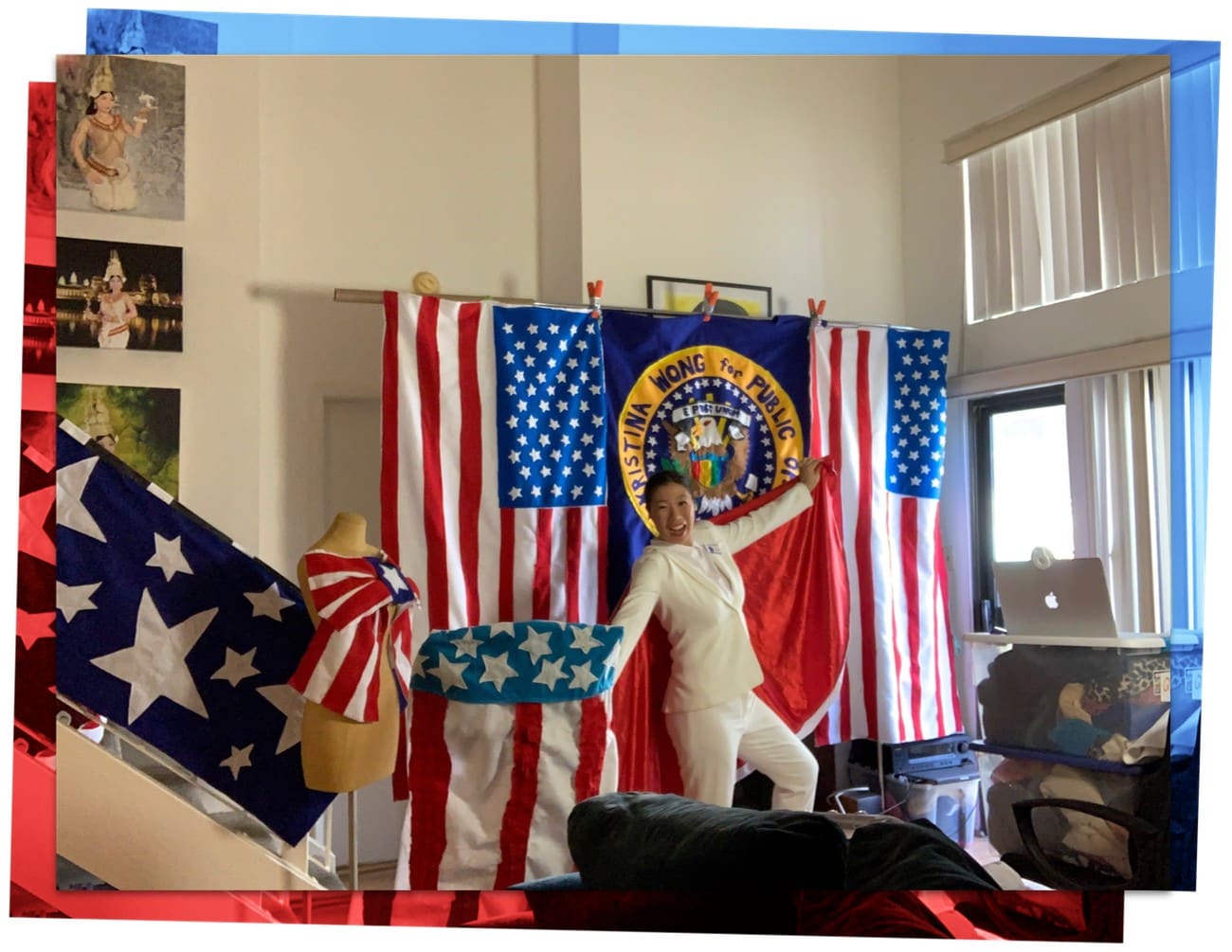
1. Solo theater artists have an advantage in this brave new world of theater making. And weirdo site-specific performance artists have one even more.
All the lonely years of doing a show by myself make for one less technical headache. I don’t envy the ensemble pandemic productions cobbling together remote green-screen shots to create the illusion that actors are in the same room together. And those site-responsive theater projects/less-than-optimal presentations of my work that I cut my teeth on throughout my career? That was the unexpected training for turning my living room into a TV studio. That said, it’s a hell of a lot more work to do this solo work from home, as you are your own lighting, set designer, and stage tech who must clean up after yourself.
2. Think of it as a hybrid between theater, selfie camera confession cam, and object dance.
It’s theater because you are doing it without breaks and edits. It’s a selfie video because you are moving your camera around and addressing people on the other side of the lens. And it’s dance because now, instead of remembering to cross stage right, you also have to remember to turn on your filter, tilt a lens, or move a set piece from behind your couch.
3. You don’t need to project your voice anymore.
Unless it’s a specific choice, using all that diaphragm work to address the back of the house from inside your actual house will just blow out your audience’s speakers. We found ourselves restaging my big booming political speeches into intimate reflections to one individual on the other side of the camera.

4. Find a way to stand up to perform and get a rig that moves around.
The biggest game changer for performing online is mobility for you and your camera. Here’s my $0 setup. It’s an office chair, with two giant Tupperware containers (filled with inventory from my Poshmark closet). I briefly considered buying a table on castors, but this worked fine and allowed me to do things like spin, jiggle, and move my laptop around the house.
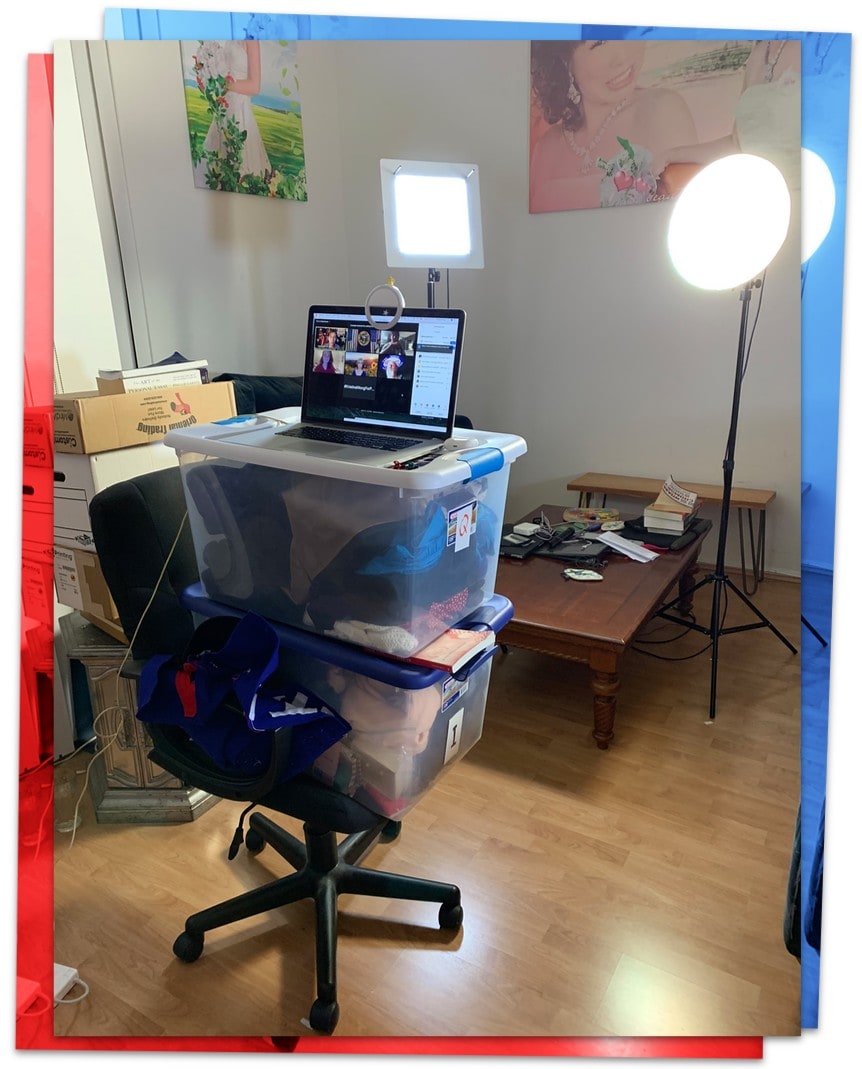
Here’s a fancier setup that Thaddeus Phillips uses in Zoo Motel, which he devised during the lockdown and performs from his home in Bogotá, Colombia, for an international audience. It's a 360° full rotating Camera Crane (but mini). Thaddeus says, “We call her ‘The Eye’ and she is my acting partner.” Photo courtesy of Thaddeus Phillips.
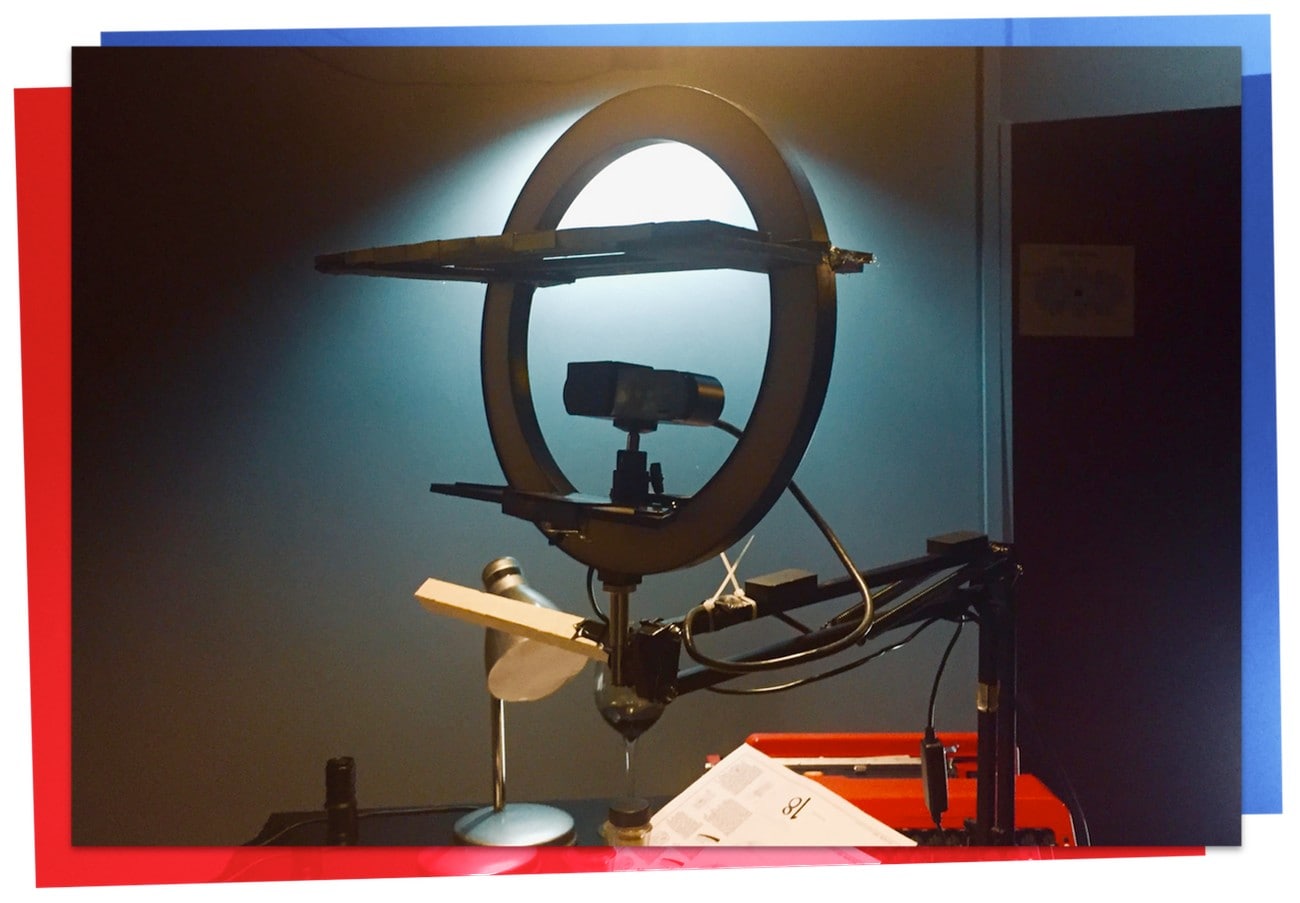
5. Your house is your dramaturg.
The stairwell to the loft just became your dramatic entrance. Your white ceiling is now the backdrop for that story about white privilege. The older pictures of yourself on the wall are the backdrop for reckoning with your past. Rather than covering up your home and making it look like a neutral black box space, use private space to help tell your stories.
Also, that nook in the sofa is your new prop/costume table.
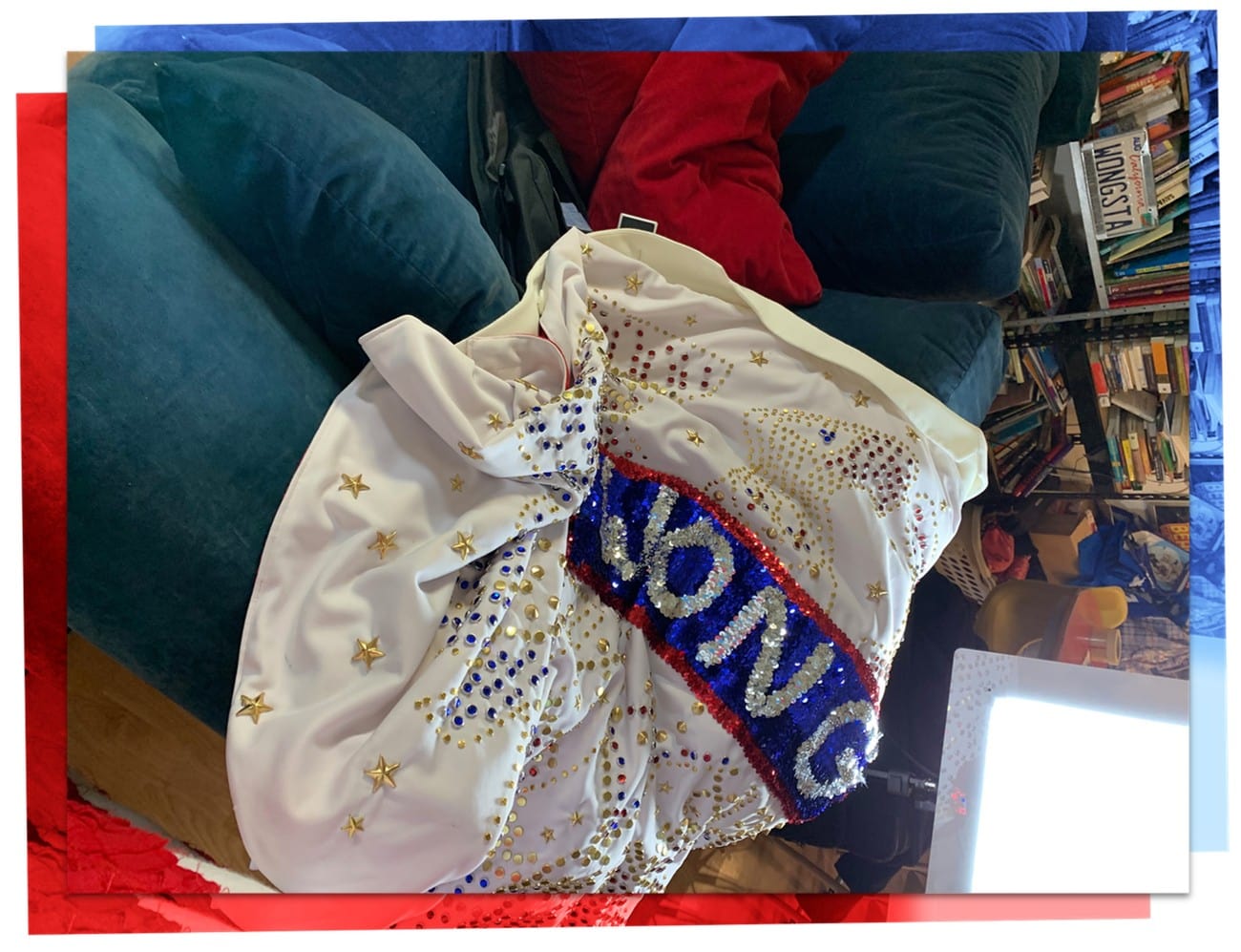
6. Cheap tricks are satisfying to audiences.
In my show, I tell a story about getting stoned and waking up on a local ballot. Turns out Zoom filters were made for storytelling about getting high off your ass!
The latest version of Zoom provides filters and those annoying animal face features which I never knew what to do with—until now. Deploy them at key times and you can delight the hell out of audiences.

7. Don’t clean up your home, your messy sink creates “intimacy.”
One of the audience’s favorite moments is seeing that I’m wearing Korean cleaning slippers with my pantsuit. Some also have said that the clutter in my house makes the piece so “intimate.” Sure. I’ll take it.
Part of what pushed me to go ahead and restage my show for my home was watching my director Diana Wyenn’s solo show Blood/Sugar, which she adapted for her home. Her housemates and dog Remy make unrehearsed cameos, and it makes the whole situation of us being stuck at home that much more personal and relatable.
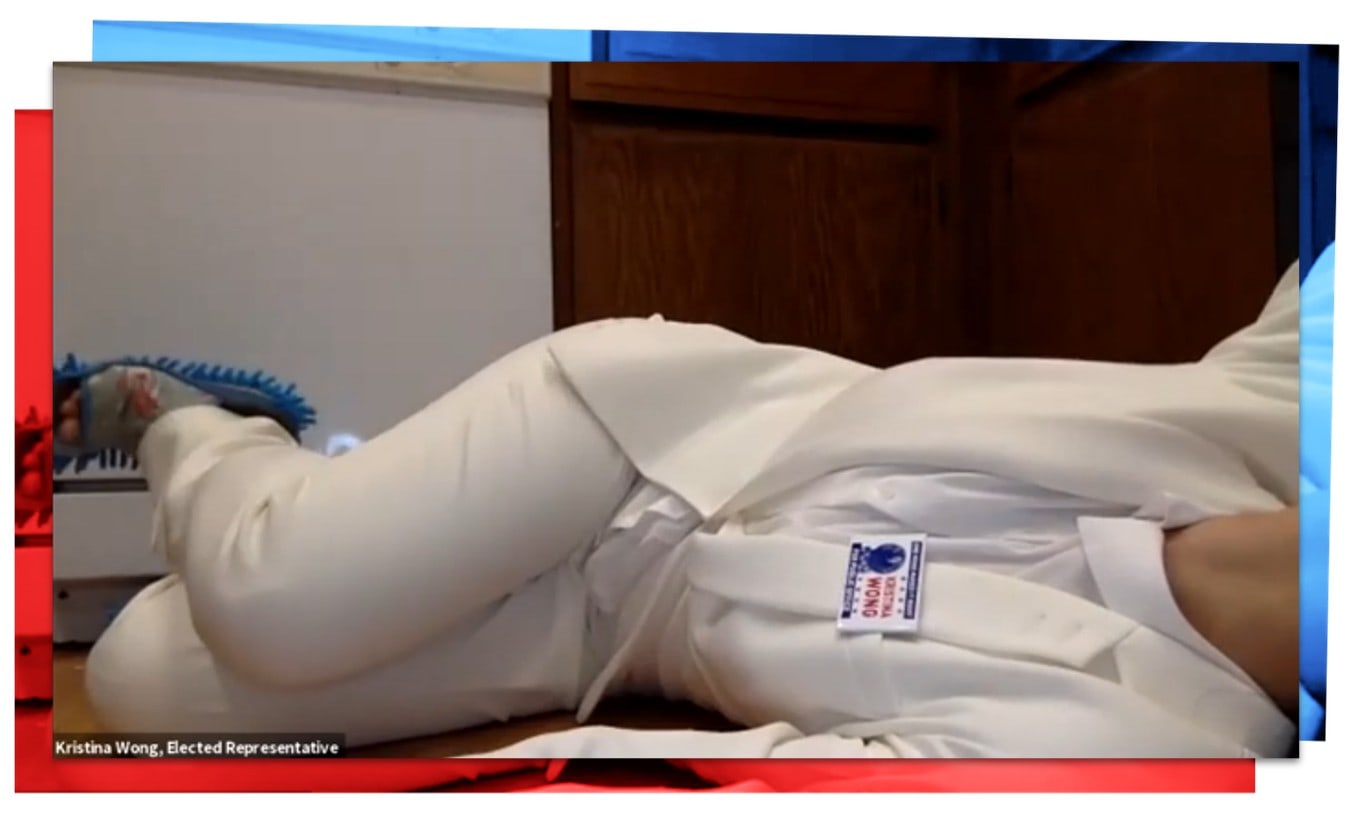
8. If you need to see people doubled over laughing or hear audiences vocally affirming your every line, Zoom theater is going to suck for you.
That said, leaving the chat window up finally lets audiences whisper to each other in the theater and is fun to scroll through after the show to see the reactions you missed.
9. You will need to invest in some lighting. And sadly, none of it will be flattering.
At last count, I own three different ring lights and have borrowed an assortment of other odds and ends film lights. I can’t find the non-blackhead discovery mode on any of them. But it doesn’t matter because my crappy 2015 laptop camera and Zoom take 10 years off my skin.
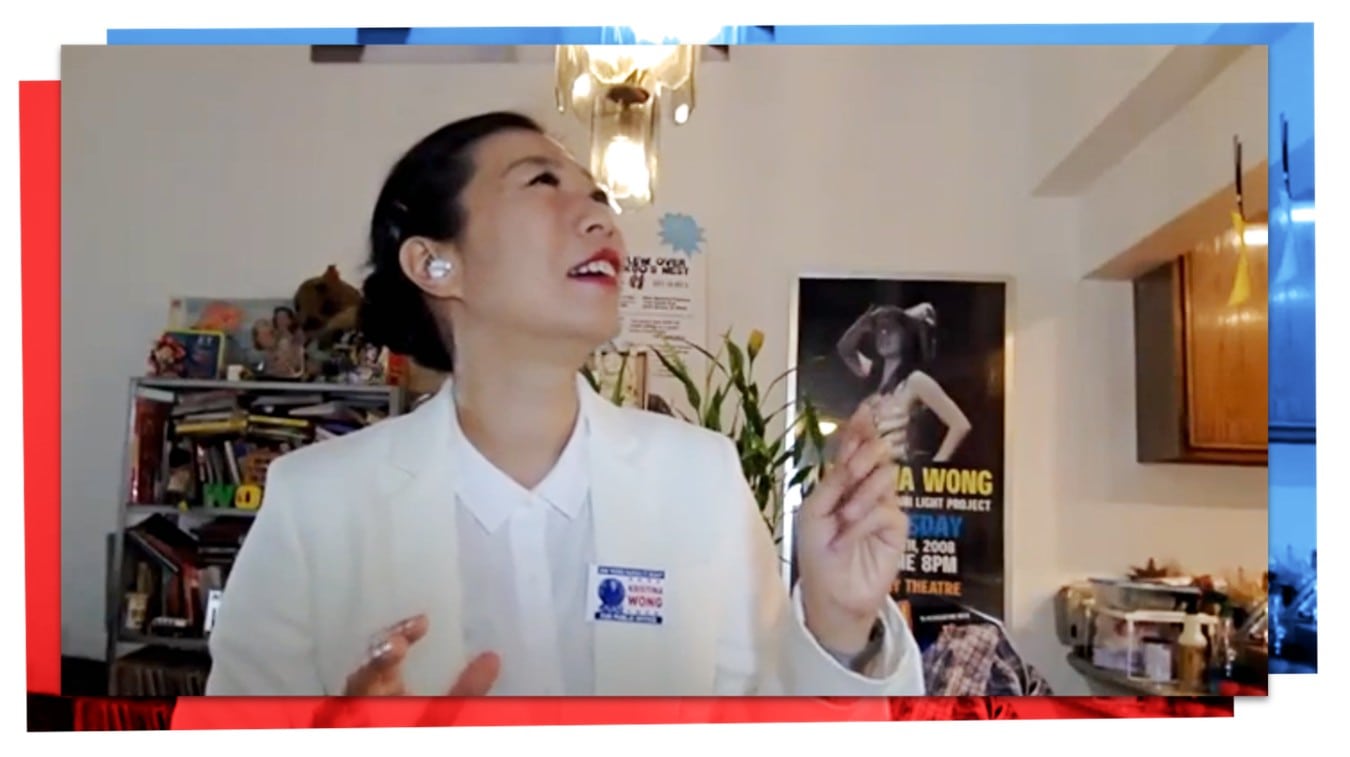
10. Because I don’t have a magic lighting designer working a nonexistent light grid in my home, scene changes are now literally SCENERY CHANGES in my house.
We found that starting a new scene was all about shifting the backdrop for the audience.
11. The same jerks from the “Before Times” who would gleefully suggest “You should put your shows on Youtube” as if it would at all be the same experience will STILL not come to your Zoom shows.
And yes, I am bitter about this. But I hope those who are so free with their unsolicited advice are at least learning how difficult it is to live in a world where we engage with people only through screens and that this is why we do our work live.
12. Set time aside after the show to debrief with someone and have a meal ready to eat after the show.
What sucks about doing shows online in quarantine is there’s no getting flowers, no post-show drink, and no long parking lot goodbyes to your friends who came out to see you. So take some time after the show to say hi to the audience or debrief with your screen manager. And you will be hungry, so have some food ready so your post-performance body doesn't have to cook alone.
13. Most rehearsals end up being more tech rehearsal than performance rehearsal. EXPLETIVE. FILLED. REHEARSALS.
Just trying to figure out how Diana would fire off Qlab sounds without using OBS Ninja, Vmix, or an expensive second technician had me cursing this whole process, buying and returning multiple pieces of stereo equipment, and losing hair and sleep. Zoom wasn’t built for theater, but you can find unexpected ways to delight the audience by using it in new ways.
14. You will likely break every theater safety code rigging your house like a theater.
When risking my life to rig my un-fireproofed set and lighting in my home with just a stool and some clamps, I think frequently about every OSHA and fire marshal code I must be violating.
15. If Zoom Theater isn’t your bag. It’s ok. Find what you can to feed you as an artist now.
I get it. This might not be satisfying. It’s ok to take a break and do something else that informs and fulfills you as an artist. For example, my former lighting designer Joey Guthman is using this time to run a little bakery out of his apartment. And if I wasn’t trying to get an election-themed show up right now, I probably would have taken off for the woods in an RV like some people I know.
16. Nothing beats live theater.
If anything, every attempt to innovate Zoom theater should remind us what a privilege it is to have live gatherings and experience performers sharing the same air as us. When we can meet again in person, I hope we praise live theater as that precious commodity that we should never have dismissed as replicable in any other way. But humans still need connection even now, and until we beat this virus, Zoom theater is one safe way we can share with each other. The bar is low and audiences are hungry for connection.


Kristina Wong is a performance artist, comedian, and elected representative of Koreatown Los Angeles. She’s toured on the NPN network and received several Creation Funds for her past work. Her show Kristina Wong for Public Office tours live from her home until election day, including an NPN Artist Engagement Fund presented by Art2Action. It will also be filmed onstage by Center Theater Group’s “Digital Stage” series and will be available for on-demand streaming from October 30–November 29.